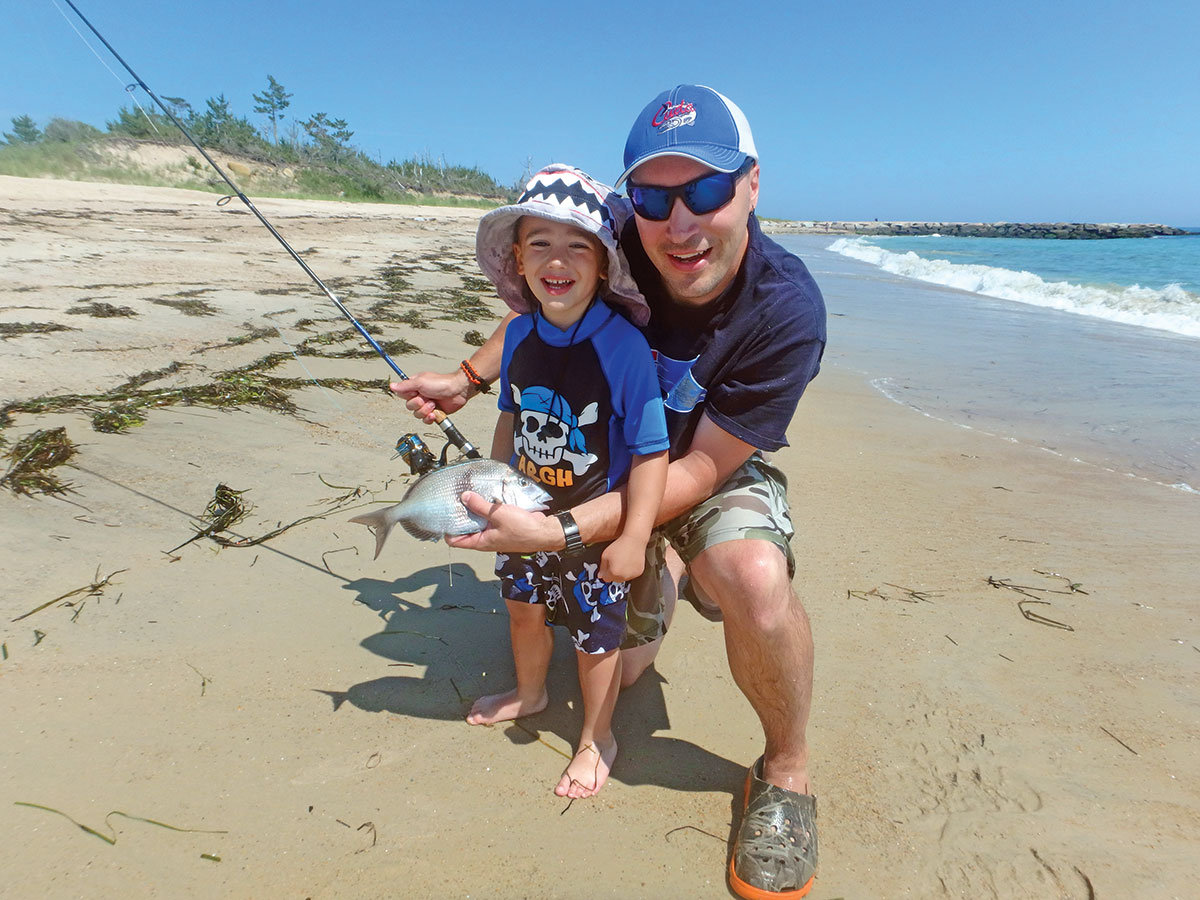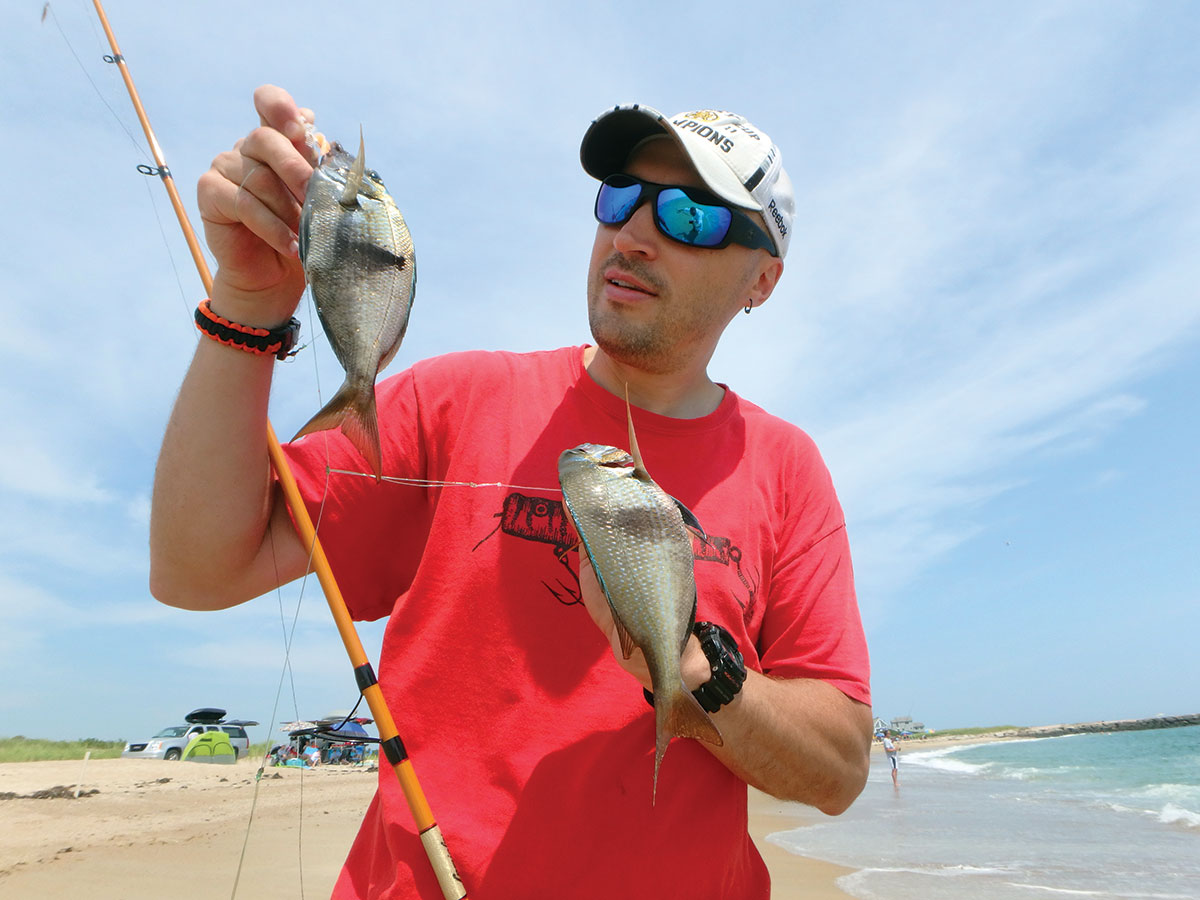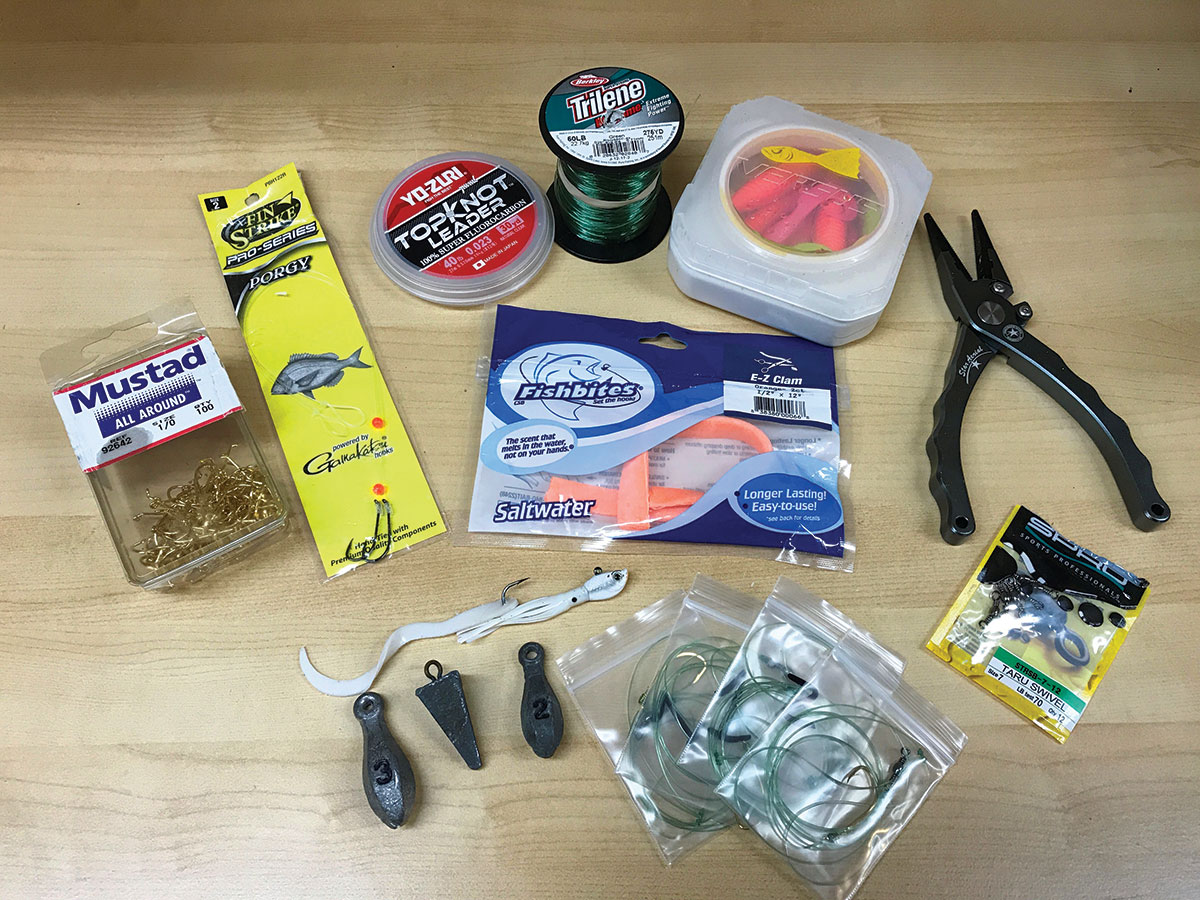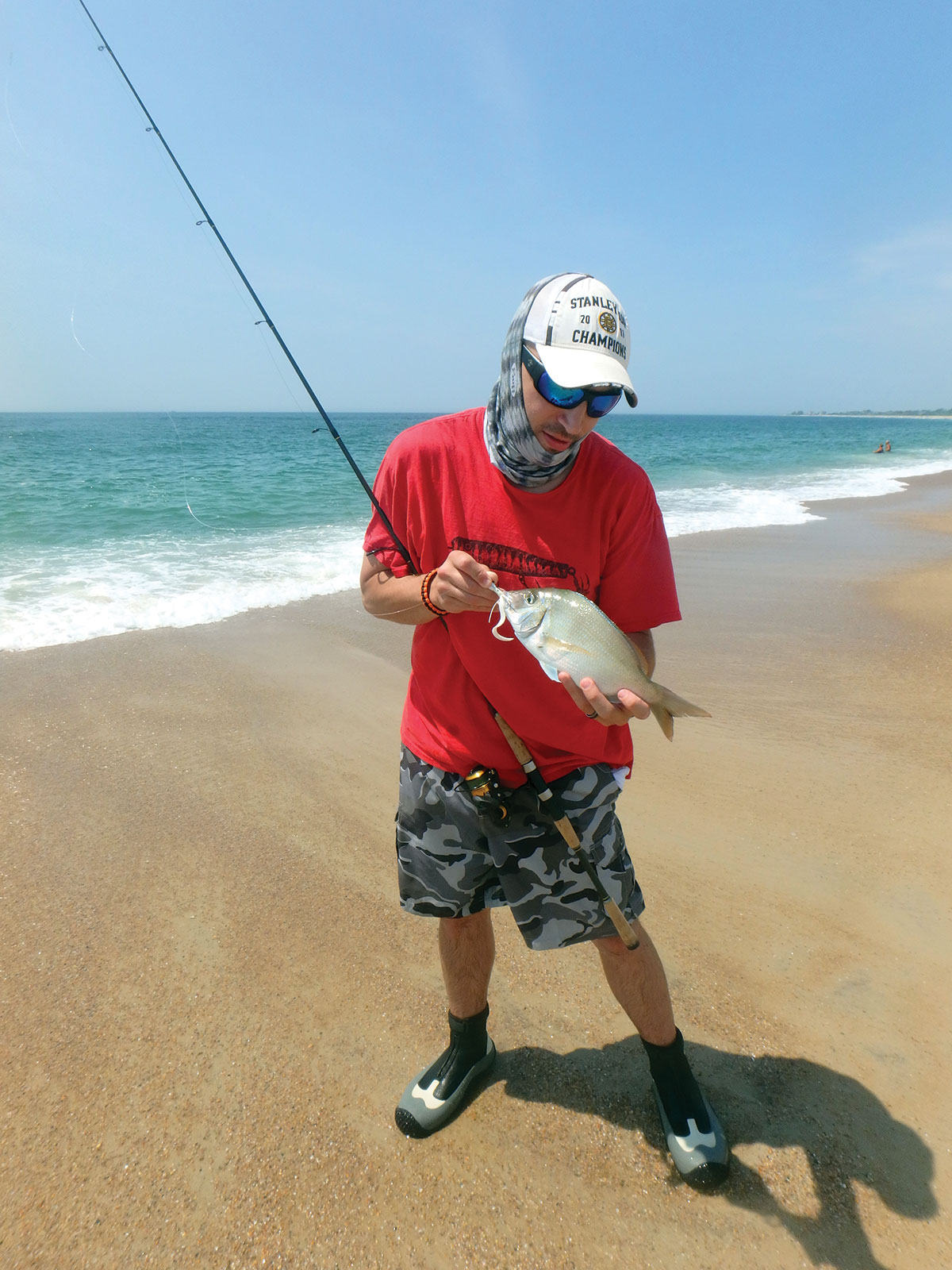
Whether you refer to it as a porgy or a scup (I find myself using both names interchangeably.), Stenotomus chrysops could very well be the perfect saltwater species here in New England. They are plentiful, bag limits are ample and they can be landed on simple gear from both shore and by boat with relative ease. What’s even better is that they make great table fare. That said, some anglers still look down their noses at porgy fishermen.

I’ve heard it said by some fishermen that if bluefish grew to be as big as striped bass then they’d quickly change their favorite target species. Now while the prospect of doing battle with a 30-, 40- or even 50-plus-pound bluefish is quite intriguing, no one would be worrying about getting eaten by a great white shark if schools of giant bluefish could be found prowling the surf in the summer months! Now take the lowly porgy. For its size it’s tough to find a harder-fighting species. If they grew into even the 20-pound class then I’d be selling off my surf plugs in favor of hi-low rigs. Well, maybe not quite, but I’d most certainly be changing up my seasonal game plan.
Scup-y struture
Finding a likely hot spot is pretty simple, even for us shore-bound anglers. In all reality porgies can be caught just about anywhere you can access the shoreline, but porgy pros will tell you that certain structure types hold more and larger fish than others. When I first began tossing hi-low rigs tipped with small strips of squid seaward in hopes of filling my cooler, I did little more than find an open spot on a sandy beach and begin casting. I took little time to think about where exactly I was setting up camp and instead just fished near others who were doing the same. I quickly came to realize that they really do relate to structure, whether it is a mussel bed or rockpile. Even finding a small area of bottom that is pebbly in an otherwise barren stretch of sandy bottom is enough to hold schools of porgies, and I verified this by donning a mask and snorkel to see why a move of even as little as 10 feet up or down the beach often had a great influence on my success.
So to begin your hunt, seek out rockier stretches of shoreline. They don’t need to be super-gnarly, boulder-filled beaches, but some sort of rock or hard structure is preferred. If you have a local outflow with rocks adoring the channel edges, then these too can be good spots. The breachways of South County, Rhode Island (Weekapaug, Quonochontaug, Charlestown and the Galilee Channel) are good examples. But you don’t need an outflow as rocky points are good porgy spots, too. Places like Morningside and Woodmont in Milford, CT, and Watch Hill and Brenton Point State Park in Rhode Island are perennial go-to spots. While the Cape Cod Canal is better known for its fantastic striper fishing, it too is a great spot to catch a mess of porgies. When asked where he’d recommend near the shop, Greg Mcsharry of Red Top Sporting Goods replied, “The west end of the Canal is great for scup. The Railroad and Bourne Bridge abutments on both sides of the Canal are popular scupping grounds. These areas have a little bit of everything as far as structure goes: sand, boulders and deep holes that always hold some sort of baitfish. At the shop we recommend targeting them one hour on either side of slack due to the lack of heavy current at those stages.”
How many hooks

I’ve seen porgy rigs with as few as one hook on up to three and even four hooks spaced at rather even intervals. Personally I go back and forth between one- and two-hook rigs, and it’s usually dictated by how fast and furious the action happens to be on a given day. If the fish are hitting my rig as soon as it touches bottom, then I usually opt for a single hook. But on days when the bite is slow I feel that, if nothing else, that second hook puts out more scent and doubles my chances of getting bit. If I am the first one on the beach, then I usually start thigs off with a two-hook rig and see how things play out from there. Oddly enough, I also find that I land larger fish on average with a single hook, but that could have just as much to do with my propensity to fish just the one hook when the feed is on and perhaps it just means there are some bigger fish in the area.
Another factor debated among the porgy pro ranks is where to position the hook(s) on the rig. Should they rest on the bottom or dance tantalizingly at eye level of a passing fish? For me there is no single, correct answer here and I kind of let the fish tell me what they want on a given day. Also, just how “sticky” the bottom structure is plays on this decision. In a perfect world you can use a rig with both a hook on the bottom and one positioned up above, and this is a good place to start if you find yourself opting for home-made rigs as opposed to the store-bought variety.
When it comes to hook choice, I like small-but-strong hooks and generally fish sizes 2 through 1/0. They also need to be very sharp. Scup have a decent set of teeth, and their mouths are rather tough, so you need to be able to slam the hook home, but the hook needs to remain small enough to easily fit in the fish’s mouth. Be sure to pack a lot of extra hooks, too, as you are going to go through a lot of them between hanging on rocks, bending them while removing a hook and the simple fact that a good day of porgy fishing can yield 50 to 75 or more fish landed.
The Bait debate
Once again, each porgy pro has his or her favorite and even sometimes secret bait, and they all work at one time or another. It’s common to see natural baits including squid, clam, sandworms, bloodworms, small pieces of fish and even nightcrawlers being used. If there is one item common to all of these it is that you don’t need to use a lot of bait on the hook, you just need to put on enough for the fish to smell the offering and get it into its mouth. One thing I learned pretty quickly is that too large of a piece of bait is actually a bad thing as it’s easier for a fish to grab hold and pull it off the hook without finding the pointy end as opposed to something about the size of my fingernail, which they tend to suck right in.
If you don’t have any natural baits available, fear not as there are other options. When I am fluke fishing and the tail of my Gulp is bitten off, I save the body and repurpose it for porgy fishing by cutting it into thumbnail-size pieces. You can also use a synthetic cut bait alternative like Fishbites. I put a pack of Fishbites clam-flavored E-Z Baits to good use late this summer on the beaches of Rhode Island. I rolled the dice on this product’s effectiveness and went to the beach armed with no bait back-up. By the end of the day, across a group of about a dozen anglers the three who were using the Fishbites landed the most and the largest fish. Granted this is a small sample size of just one outing, but put up against squid and sandworms being used by the others this day, I was quickly sold on both the effectiveness and ease of use and I’d recommend it to anyone looking to put some tasty porgies in the cooler this summer. What’s better is that these biodegradable options don’t need to be kept cool like the real deal, so I can keep them on hand and at the ready for when the urge to go scupping strikes!
But don’t get hung up on only using bait; I have landed some hubcap-sized porgies on artificials, too. Porgies will strike small diamond jigs, epoxy jigs, bucktails both with and without a trailer and even small lip-less freshwater crankbaits! (Check out the article by Paul Stowe in the September, 2018 article, Crankbait Porgies: Downsizing For Jumbos.) If nothing else, porgies can be considered opportunistic feeders and will eat just about anything that they can fit in their mouths, either in a single bite or by nipping off smaller pieces almost like a piranha.





